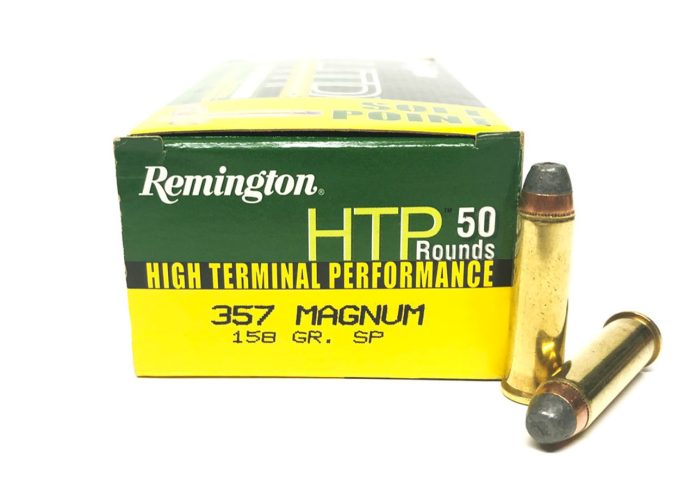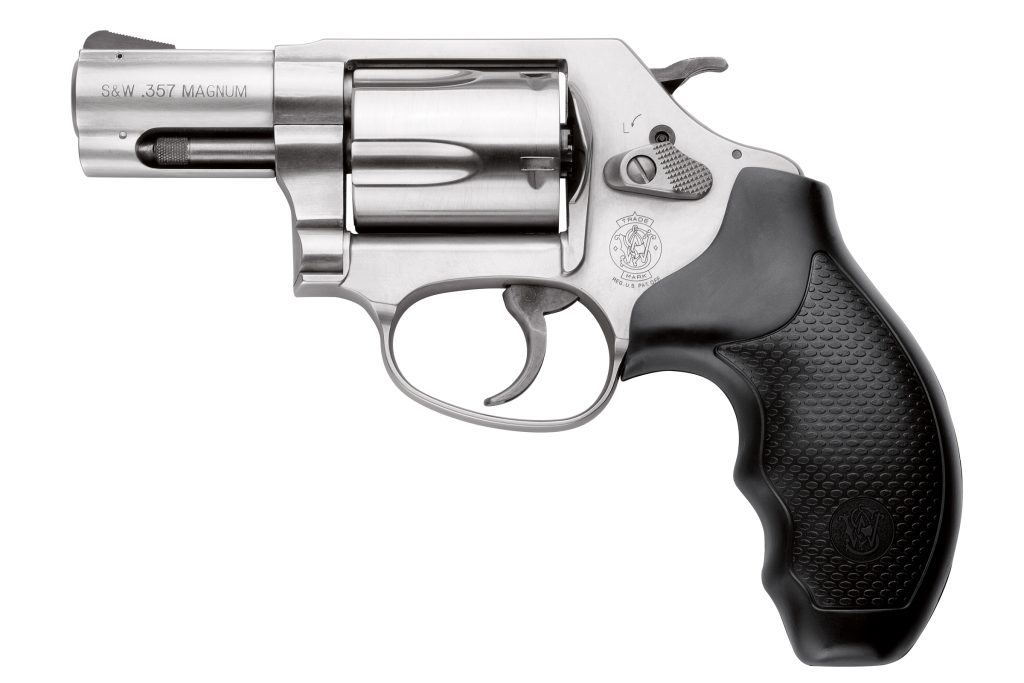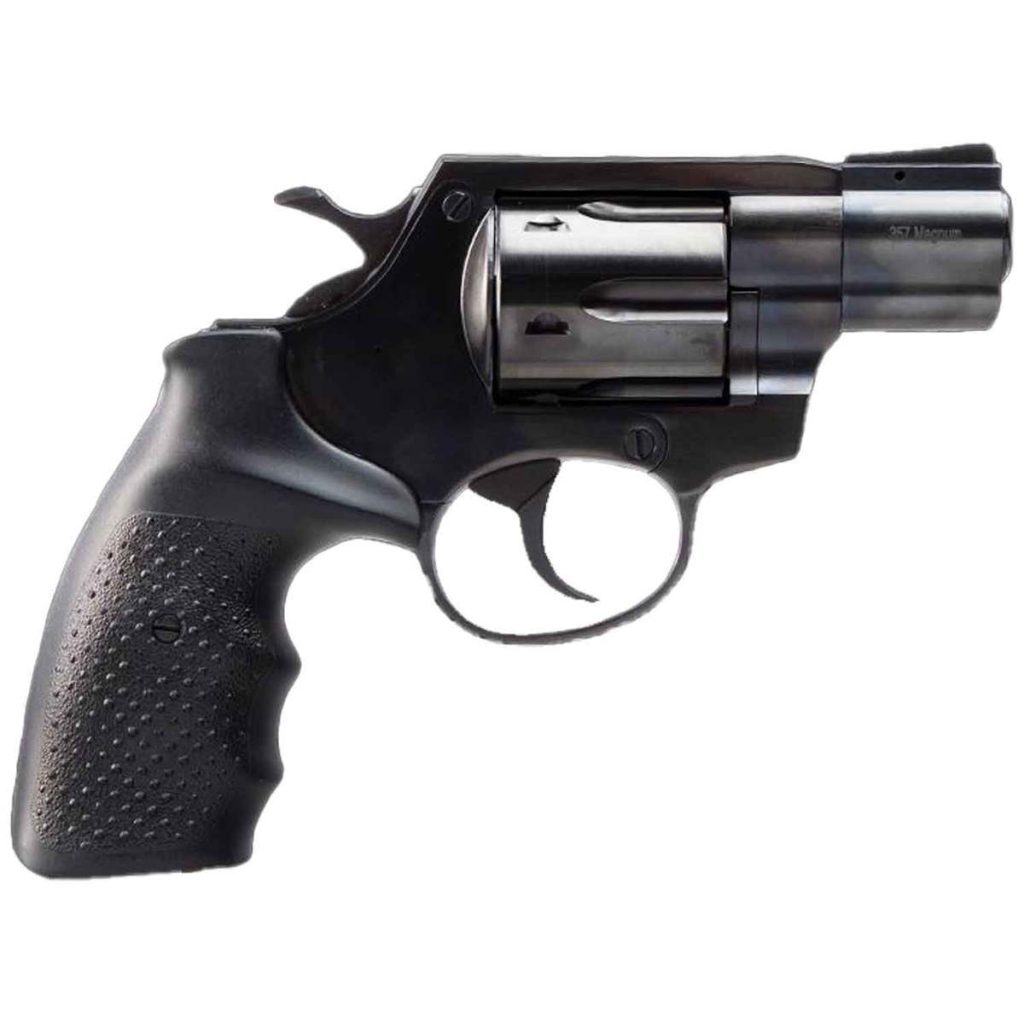
I love the old lawman revolvers. Not the Model 10s, but they are cool, or the Colt Police Positives. When I think of a Lawman revolver, I think of the Highway Patrol. They often carried big .357 Magnum revolvers. Heavy frames and big barrels. Designed to stop motorized threats. The lawman revolver is most definitely a .357 Magnum. The .357 Magnum is a caliber that’s popular with revolver carriers, and at first glance, it’s easy to see why.
However, I’m here to say I don’t think it’s all that and a bag of chips for the average person. I believe I should qualify my statement. When I’m talking about concealed carry and self-defense, I’m talking about a gun with a barrel that is 1.87 inches to about 3 inches, backed by a compact frame and grip. If your concealed carry weapon is the big iron, then this may not all apply to you.

I’m not referencing the old wives tale that a .357 Magnum from a short barrel is useless. It’s admittedly more powerful and more capable than any .38 Special load. Even from a snub nose barrel, the .357 Magnum moves considerably faster and hits with more energy. It often penetrates better and expands earlier and faster. That’s all true, but there are also some sacrifices you have to make to carry a magnum round in a small revolver.
Need vs. Wants
The 2nd Amendment isn’t about needs or wants. It’s about rights. You can carry whatever you want, shoot whatever you want, and if a .357 Magnum is for you, great. This isn’t a call out or judgment, just observations I’ve seen and how they relate to the average concealed carrier.
.357 Magnum and Concealed Carry
It’s worth mentioning that the .357 Magnum was never intended to be a concealed carry caliber. The cartridge came to be as a direct competitor to the .38 Super, and in a way, it all harkens back to the automatic vs. revolver argument. In the 1930s, the automobile bandit was crisscrossing state lines, raising hell, and fighting off police officers.

The use of vehicles amped things up, and the average .38 Special cop revolver wasn’t enough to penetrate the metal of these automobiles, and if it did, it was running out of steam. The .38 Super was designed to pop right through the metal of an automobile, and the .357 Magnum was the revolver option for the same purpose.
The .357 Magnum wasn’t designed because .38 Special wasn’t dropping bad guys. It was designed because those bad guys were hiding behind cars. With this in mind, it also wasn’t really designed for smaller guns but for police-sized duty guns, for lawman revolvers. As a concealed carrier, it’s very unlikely you’ll be in an extended gunfight where you need to punch through the steel of a 1930s automobile.
Strengths of the .357 Magnum
The .357 Magnum does fly fast and hit hard. It’s a capable defensive cartridge that can penetrate deeply and expand widely. It scores high in all the basics required to be a good fighting cartridge. The .357 Magnum is certainly no slouch. If you’re only carrying five to six rounds, why wouldn’t you carry a .357 Magnum and get the most out of your gun?
Downsides to .357 Magnum
Well, the downsides are why. A .357 Magnum cartridge generates a lot more recoil, nearly three times that of a .38 Special. That can be brutal on your hand. It’s got tons of concussion, muzzle flash, and noise. Getting fast follow-up shots on target is difficult, at least from a compact revolver.

Anything less than a 3-inch barrel can be awfully difficult to handle. It’s not fun to train with and is expensive to train with. With .38 Special, you are still capable of getting good penetration, although you won’t get the expansion you often want. Expansion is niece, but not the end all be all for defensive ammo. While the extra expansion is good, the extra energy isn’t really useful.
Being able to make fast and accurate follow-up shots from my handgun is more important than putting one bigger hole in a threat. I think the Georgia Arms .38 Special Snub Nose 148-grain wadcutters are best for small, ultra-light revolvers.
It Still Shines In Some Categories
The .357 is a fine cartridge. It’s great in medium-frame revolvers, and if you are willing to shoot and train, you can certainly make it work in a small revolver. I just don’t think that’s the best choice for most shooters and concealed carriers. I still love the round, and my current favorite handgun is a seven-shot GP-100, but it has its limitations.



